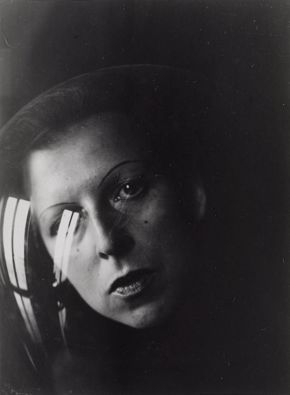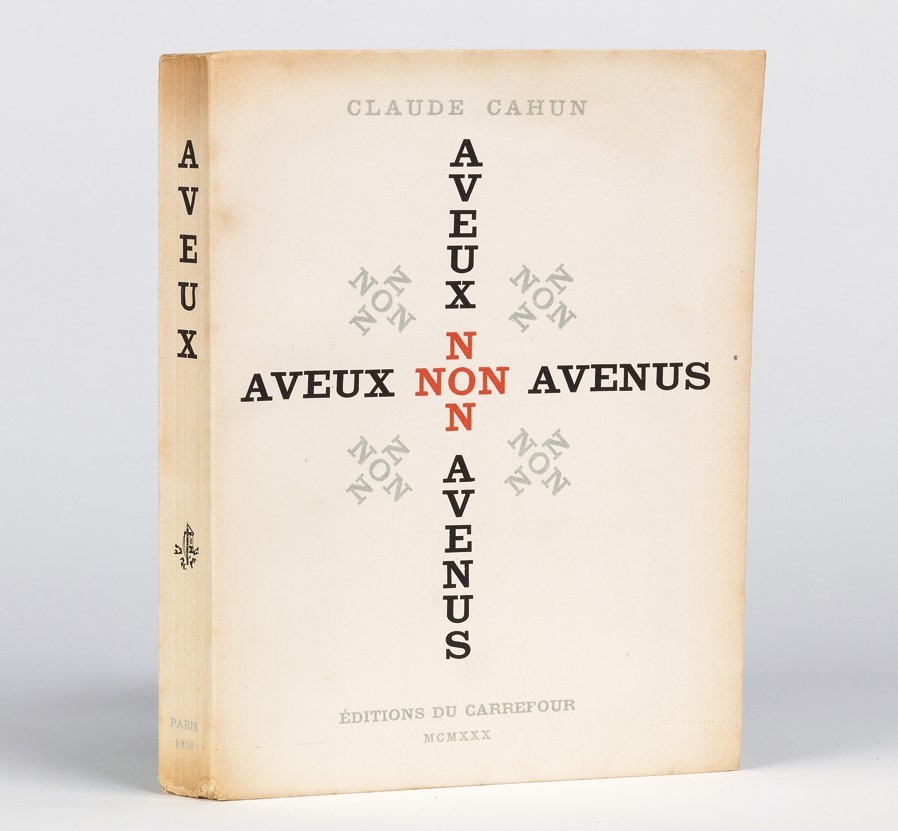Claude Cahun: “La Garçonne” in the Hirsch Library March 29, 2018

Claude Cahun, Self-Portrait, 1925, gelatin silver print, the Museum of Fine Arts, Houston, Museum purchase funded by the Annenberg Foundation, courtesy of Wallis Annenberg, the Manfred Heiting Collection. © Estate of Claude Cahun
The Hirsch Library’s copy of Claude Cahun’s Aveux non avenus, on view in Written with the Body.
A photomontage from Claude Cahun’s Aveux non avenus.
A photomontage from Claude Cahun’s Aveux non avenus.
One of the artists featured in the Hirsch Library’s exhibition Written with the Body, Claude Cahun has only recently started to become as well known as she should have been in her lifetime. Born in France, Cahun (1894–1954) was a writer, photographer, and activist. Her art explores the shift in gender dynamics during and following World War I, when women moved into positions from which they had previously been excluded.
La Garçonne
Modern women, known in France as les garçonnes (a feminized spelling of the French word for “boys”), grew in numbers with such a force that campaigns began to encourage women to return to the hearth, marry, procreate, and rebuild France. Cahun, however, was more interested in experimenting with—and rewriting—the complexities of gender roles and identity.
Aveux non avenus
Created within the context of Europe’s Dada and Surrealist movements, Cahun’s book Aveux non avenus (Disavowals, or Canceled Confessions), was published by Éditions du Carrefour in 1930. An avant-garde publishing house based in Paris, Carrefour also produced books by Max Ernst—see the Hirsch Library’s copy of La Femme 100 Têtes (The Hundred Headless Women)—and Franz Kafka.
Each chapter of Aveux non avenus is preceded by a photomontage—often made by Cahun in collaboration with her partner, Marcel Moore—featuring musings on the female body, femininity, and a desire to normalize the fluidity of gender and sexual orientation. As one of the few female Surrealists, Cahun countered the movement’s erotic objectification of the female body by posing nude with confidence and dressing in drag.

The Hirsch Library’s copy of Claude Cahun’s Aveux non avenus, on view in Written with the Body.
Paving the Way
A forerunner of American photographers Cindy Sherman and Francesca Woodman, Cahun invented and performed a variety of personas in her work, in addition to creating and photographing staged scenarios with dolls and inanimate objects. Like Sherman and Woodman, Cahun made photographs that are mostly self-exploratory self-portraits. Yet Cahun’s characters voiced her position as an outsider: a woman, a lesbian, a Jew. Through them, she challenged the cultural paradigms of her time.
See more in the exhibition “Written with the Body,” on view in the Hirsch Library through April 28.





